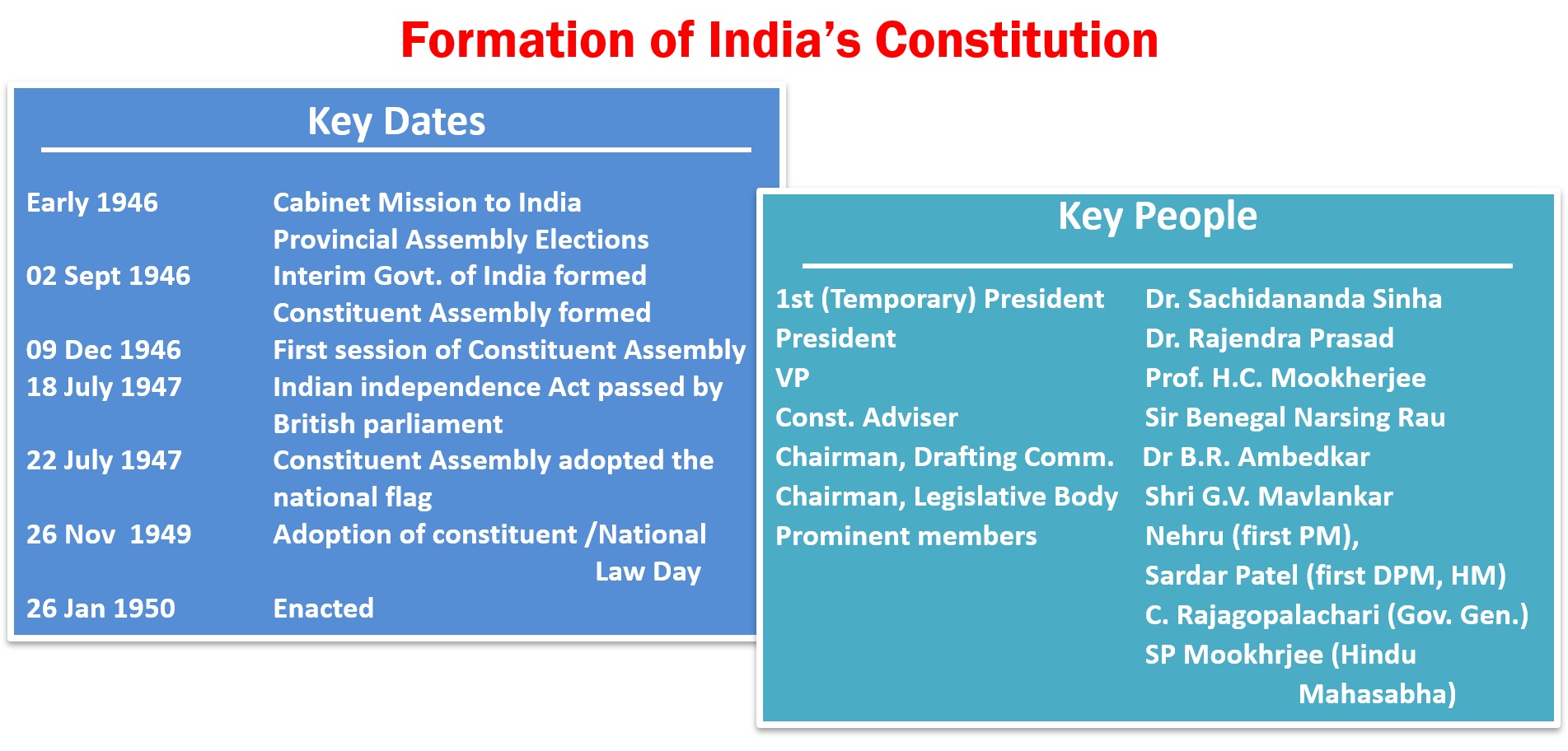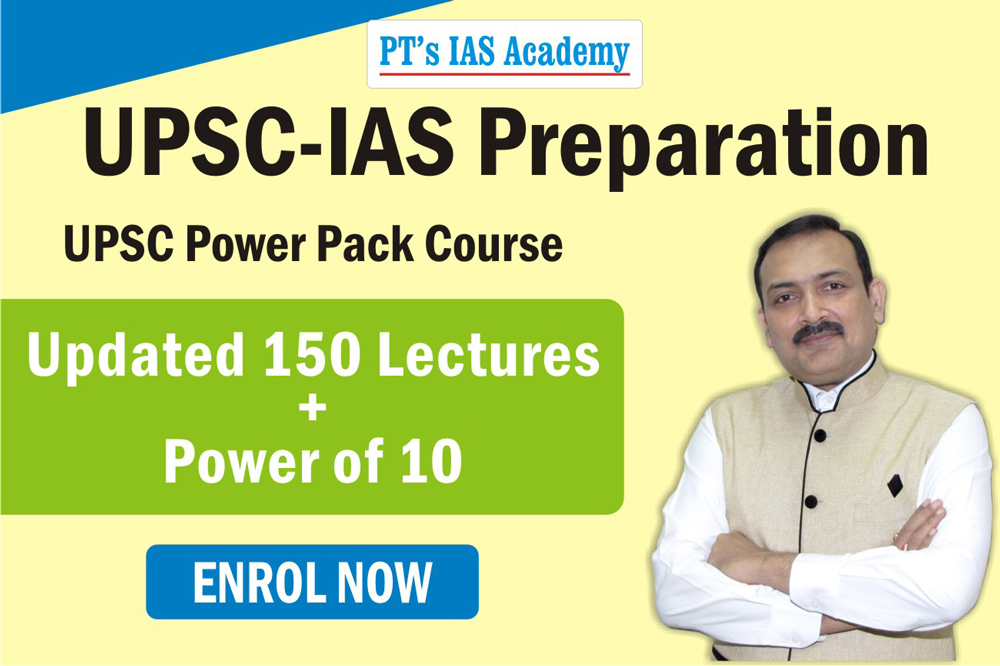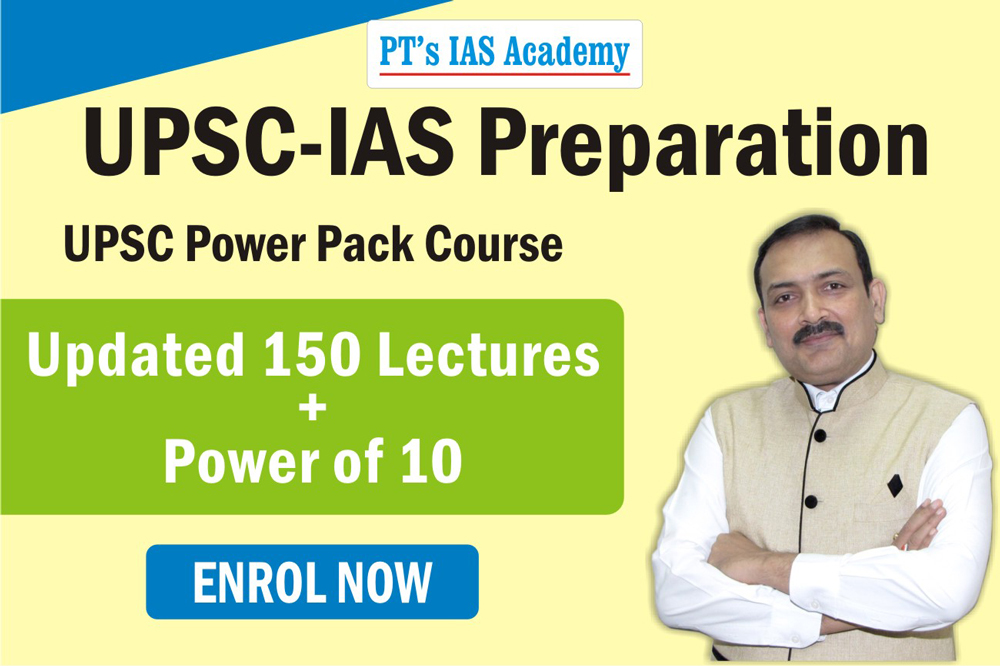An update on the Constitution Day of India, 26th November (also the "National Law Day")
India's Constitution Day celebrations - 26th November
- The story: As a nation ravaged by two centuries of British colonial exploitation, Indian freedom fighters fought for a free nation, governed by a properly made Constitution, and eventually succeeded in doing it. The road was tortuous, but India negotiated the dangers successfully. When the new Republic came into being on the 26th of January, 1950, it was a huge success given the circumstances.
- Details: The "Constitution Day" is celebrated on 26th November every year, also known as the National Law Day. It was on this day in 1949, that the Constituent Assembly of India formally adopted the Constitution of India that came into force on 26th January 1950.
- The Ministry of Social Justice and Empowerment on 19th November 2015, notified the decision of the Government of India to celebrate 26 November as 'Constitution Day’.
- Slowly, awareness about it is growing in India, where human rights is a persistent challenge now.
- The making of it: Leaders of the Congress had been demanding more freedom, and self-rule, from the 1900s itself. Various initiatives of the British Raj came (and went), but were largely not able to satisfy the leadership of INC. When the British asked Indians for a format they'd propose, the Motilal Nehru Report, 1928, gave a detailed structure with comprehensive fundamental rights inbuilt. The "14 points of Jinnah" were a reply from the Muslim League, which objected to various aspects of the Nehru report.
- In 1934, M N Roy first proposed the idea of a constituent assembly. After many twists and turns, came the Government of India Act, 1935, which too failed due to the second World War breaking out in 1939.
- Under the Cabinet Mission plan of 1946, elections were held for the formation of the constituent assembly. Members elected from provinces too joined in.
- Finally, the work on the Constitution of India by the Constituent Assembly began, which appointed a total of 13 committees to deal with different tasks related to the framing of the constitution.
- There were 8 major committees and the rest were minor ones. The
major committees were - (i) Drafting Committee – B. R. Ambedkar, (ii)
Union Power Committee – Jawaharlal Nehru, (iii) Union Constitution
Committee – Jawaharlal Nehru, (iv) Provincial Constitution Committee –
Vallabhbhai Patel, (v) Advisory Committee on Fundamental Rights,
Minorities and Tribal and Excluded Areas – Vallabhbhai Patel, (vi) Rules
of Procedure Committee – Rajendra Prasad, (vii) States Committee
(Committee for Negotiating with States) – Jawaharlal Nehru, and (viii)
Steering Committee – Rajendra Prasad.
- The Constitution of India: It is the world's most structured, and lengthiest, written Constitution. It ensures that power of the people is used to create a state structure with some basic features, like a 'Federal System with Unitary Features', a 'Parliamentary Form of Government', etc.
- The framing took over 2 years, 11 months and 18 days. The original copies of the Indian Constitution weren’t typed or printed. They were handwritten and are now kept in a helium-filled case within the library of the Parliament.
- Prem Bihari Narain Raizada had written the unique copies of the Structure of India. Originally, the Constitution of India was written in English and Hindi.
- The basic structure of the Indian Constitution was built on the back of the Government of India Act, 1935. The Constitution of India has also borrowed some of its features from a number of countries.
- Popularising it: The Ministry of Law & Justice has launched an ‘Online Course on Indian Constitution’ on the eve of ‘Constitution Day’ as a part of celebrations of ‘Azadi Ka Amrit Mahotsav’ for 75 years of India’s Independence. The online course aims to enhance the awareness of the constitutional values to understand the fundamental rights and duties. It will also help the citizens familiarize with the glorious constitutional journey and to understand the supreme law of the land including the right to life, personal liberty and privacy issues.
- EXAM QUESTIONS: (1) What were the milestones in the journey of the Indian Constitution's coming into being? List and Explain. (2) What constitutional principles do we see being violated with impunity in modern India? List and explain. (3) Who is the sentry and watchdog that is tasked with protecting the values enshrined in the Constitution of India? Explain its role. (4) What is constitutional morality? Explain.
* Content sourced from free internet sources (publications, PIB site, international sites, etc.). Take your own subscriptions. Copyrights acknowledged.




















COMMENTS